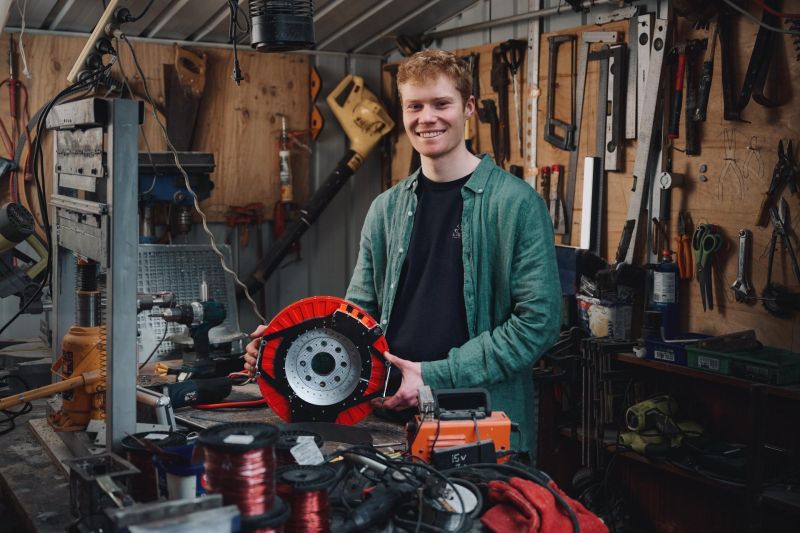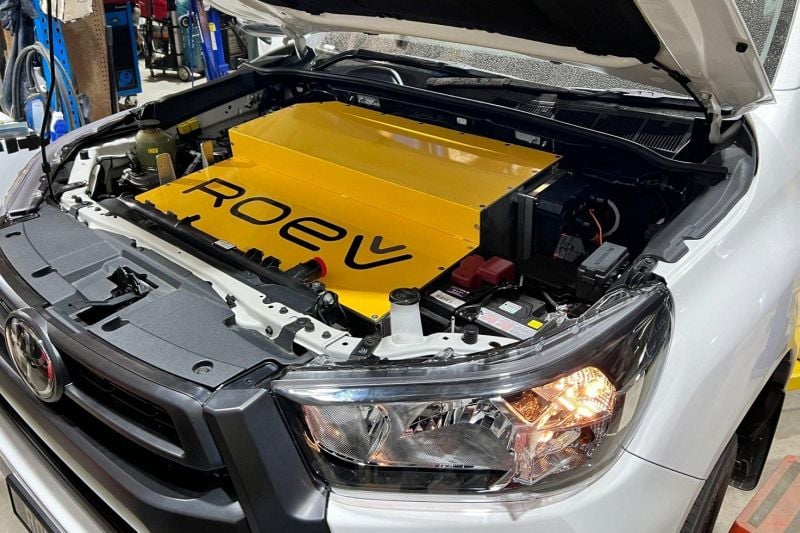A Melbourne university student has been named the winner of the James Dyson Award for his plug-and-play electric motor system.
Twenty-one year old Alexander Burton custom designed an axial flux motor, as well as the supporting systems, to address the “complex and hard-to-scale” issues that plague the electric vehicle retrofit industry in Australia.
The REVR (rapid electric vehicle retrofit) system is made up of an axial flux motor, battery pack and sensors that detect brake and throttle pedal positions.
The motor is mounted between the host vehicle’s wheel and disc brake, otherwise leaving the vehicle’s existing hardware unchanged. The system can “quickly and easily convert a petrol vehicle to electric” or serve just to hybridise a vehicle.
The battery pack is installed in the spare wheel well of the vehicle and the simple network of sensors provide the primary inputs for the system.
“Replacing the entire fleet with new EVs will be too slow, too expensive and emit billions of tons of CO₂ during their manufacture,” Mr Burton said in remarks reported by AuManufacturing.
“This is a powerful electric retrofit kit that can be quickly installed in the wheels of almost any vehicle.”
John McGarva, head of design engineering at Dyson and one of the competition judges, said Mr Burton had done “a brilliant job in packaging the motor into such a tight space” with both virtual and physical design testing being completed.
The electric vehicle conversion industry has seen a significant increase in demand recently, with the mining sector in particular looking to convert its fleets to zero-emission vehicles.
Several existing Australian companies have begun to fill this demand, with one of them being Roev, founded by Atlassian executives Noah Wasmer, Paul Slade and Robert Dietz.
“There is huge demand for light commercial EVs in Australia, particularly in the fleet market where businesses are racing to decarbonise,” said ROEV co-founder Mr Wasmer.
“Electric conversions provide an additional option to accelerate this transition and we’ve been working very closely with fleets to ensure the vehicles out-perform expectations,” he said.
The Roev conversions are expected to cost between $47,990 and $57,990 on top of the donor vehicle price – though it points out many of these donor HiLuxes will be existing vehicles that have already depreciated and been used.
MEVCO and Australian based SEA Electric have also partnered to fit its proprietary electric drivetrain to turn 8500 new or near-new HiLux and LandCruiser diesels into zero-tailpipe-emissions electric cars over the next five years.
While Alexander Burton’s solution isn’t designed to match the range and scope of the endeavours above, Mr McGarva said the entry has “met the James Dyson Award brief of solving a very real problem through iterative development and innovative thinking to develop a design to solve a very real problem”.
Runners up in the James Dyson competition included a masonry construction solution that eliminates the need for mortar and a circular economy solution that uses coconut waste filament to create cups and other products.
Denial of responsibility! My Droll is an automatic aggregator of Global media. In each content, the hyperlink to the primary source is specified. All trademarks belong to their rightful owners, and all materials to their authors. For any complaint, please reach us at – [email protected]. We will take necessary action within 24 hours.





